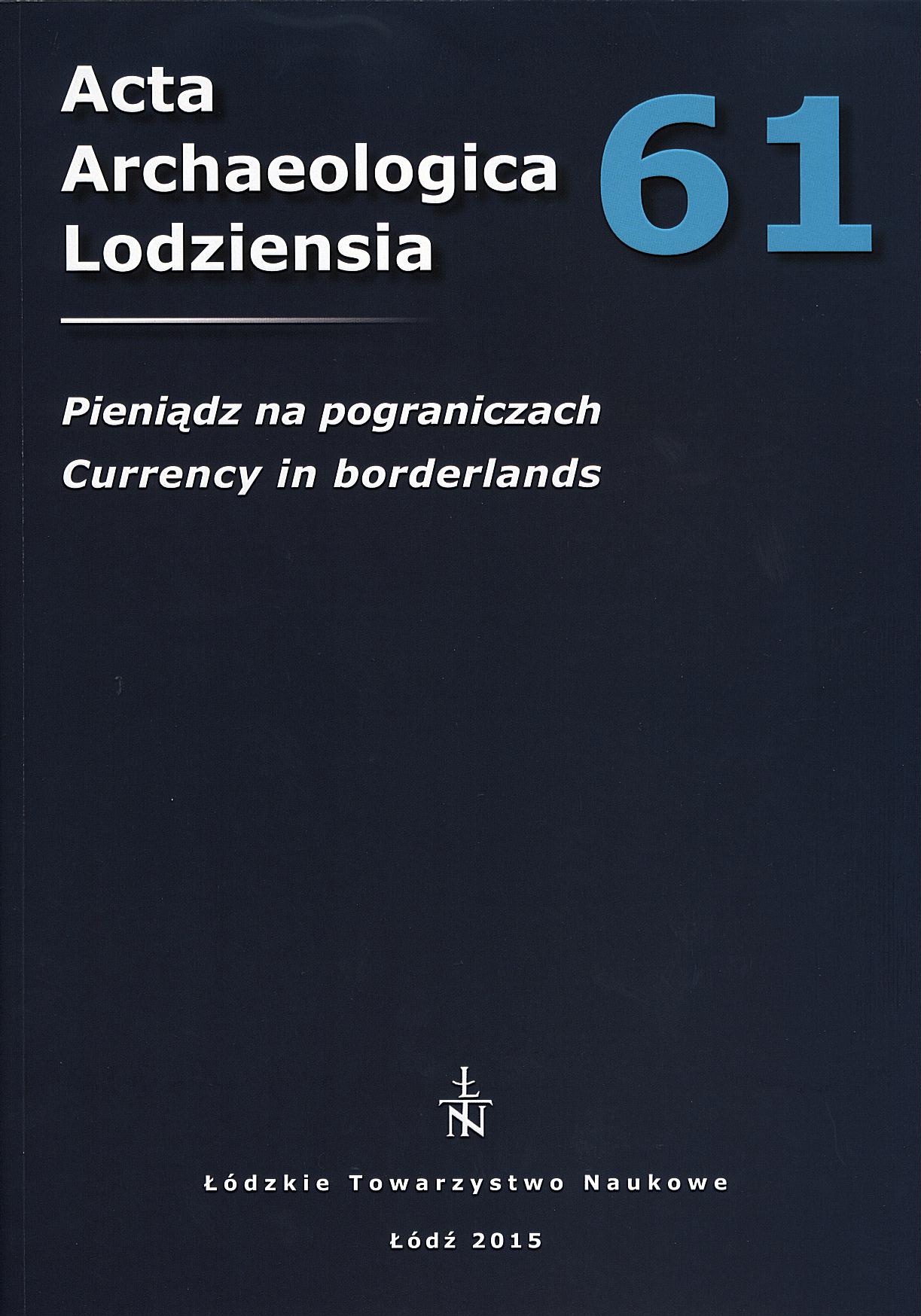Monety brązowe w rzymskich prowincjach nad dolnym Dunajem w połowie III wieku. Studium obiegu
Bronze coins in the Roman provinces on the Lower Danube in the middle of the 3rd century. Studies on coin circulation
Author(s): Jacek RakoczySubject(s): History, Archaeology, Cultural history, Ethnohistory
Published by: Łódzkie Towarzystwo Naukowe
Keywords: Roman empire; 3rd century; Dacia; bronze coins; coin circulation; cesarstwo rzymskie; III wiek n.e.; prowincja Dacja; monety brązowe; obieg monetarny
Summary/Abstract: Archaeological research into the Roman Danubian provinces forms an interesting basis for studies on general model of coin circulation in Roman provinces in the middle of the 3rd century. The article presents an analysis of bronze coin circulation in the Lower Danube region. From the end of the 1st century until the reign of Valerian I and Gallienus the central imperial mint was in Rome. After 196 the status of these Eastern mints changed from independent mints to that of branches of the Roman mint in Rome. It is generally agreed that from the joint rule of Valerian I and Gallienus onwards, Roman imperial monetary policy moved towards a process of decentralization. From this point of view, the provinces from the Lower Danube, Pannonia, Moesia and Dacia, provide an excellent example. Until the reign of Septimius Severus the coin finds show a similar pattern concerning the coin supply in this area. The mint of Rome has pride of place in coin supply. Other mints represented in the coin finds are the Greek cities, such coins are extremely infrequent low, and they are almost all bronze. The increase in the quantity of silver coinage was followed by a lack of bronze coinage. The low production of bronze denominations issued by the central mint at Rome could have been noted already in the reign of Commodus, especially as regards the lower denominations, the dupondius and as. The coin finds from this area show an even a stronger decrease as regards the frequency of the finds of central bronze denominations for the period of Septimius Severus and his successors. The phenomenon was not something specific only to the Middle and Lower Danube, but also to other parts of the Empire. In the case of Britannia, it has been established that, in fact, there was a shortage of bronze coinage from the central mint during the reign of Septimius Severus. As a consequence of this situation the denominations (the bronze coinage) in which change was given for day-to-day market transactions, is, therefore, is not surprising, and nor the fact that the so-called “emergency-money” is more frequently found in this period. The so-called limesfalsa coins, cast coins of bad quality of bronze alloy and lighter weight than the genuine coins, are more frequently found for the reign of Septimius Severus. If these coins were issued with or without the permission of either central imperial or local authority, or if they are regarded as faked coins is still difficult to stay. Concerning the topic of this study, an interesting aspect occurred during the reigns of Commodus and the first Severans, Septimius and Caracalla. The percentage of Greek civic coins issued in the period 180-218 circulating in the province of Moesia Inferior is extremely high compared to adjacent provinces. Although it has been suggested that this situation is a result of imperial visits in this region, in fact we might here have an example of the monetary and political abilities of the Imperial house. Wyniki prac archeologicznych na terenach dawnych rzymskich prowincji naddunajskich stworzyły możliwość badań nad ogólnym modelem cyrkulacji monet w prowincjach rzymskich w połowie III w. n.e. Prezentowane opracowanie dotyczy obiegu monet brązowych na terenie prowincji nad dolnym Dunajem. Analiza porównawcza została wykonana na podstawie materiałów z Dacji oraz sąsiednich prowincji. Punktem odniesienia dla danych numizmatycznych są charakterystyczne wydarzenia historyczne, takie jak ewakuacja prowincji Dacji przez rzymską administrację, wewnętrzne i zewnętrzne niepokoje na wskazanych terenach.
Journal: Acta Archaeologica Lodziensia
- Issue Year: 2015
- Issue No: 61
- Page Range: 49-62
- Page Count: 14
- Language: Polish

